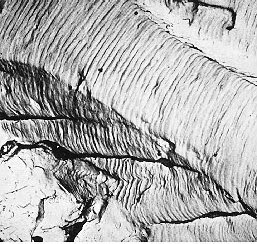- Absolutely! An understanding of fatigue effects is CRITICAL to the design of devices and structures that may be subjected to cyclic loading during their lifetime.
- Fatigue effects often cause failures which remain undetected until a catastrophic fracture occurs, frequently at a very inopportune time and without warning.
- These failures drive up warranty costs and cause considerable customer dissatisfaction. The worst case is the potential for devastating financial losses and even endangering lives.
- Therefore, the prediction of fatigue behavior can no longer be considered optional.
Fatigue failure
- Estimated to cause 90% of all failures of metallic structures
- Fatigue failure is brittle-like (relatively little plastic deformation)- even in normal ductile materials
- Fatigue failure is sudden and catastrophic
- Associated with cyclic or fluctuating stresses
- Failure can occur at stresses considerably lower than tensile or yield strengths of materials under a static load
- Cyclic stresses causing fatigue may be:
–Axial: tension or compression
–Flexural: bending
–Torsion: twisting
3 distinct stages in a fatigue failure
- Crack initiation
•Near stress concentration
•90% of the fatigue life is taken up trying to initiate a crack - Crack propagation
•Incremental advance of the crack with each stress cycles - Final catastrophic failure
•Remaining area (ligament) cannot bear the load
Fatigue appearance
- Fatigue striations
–Evidence of crack propagation with each stress cycle
–Not seen with unaided eye – requires electron microscope


No comments:
Post a Comment